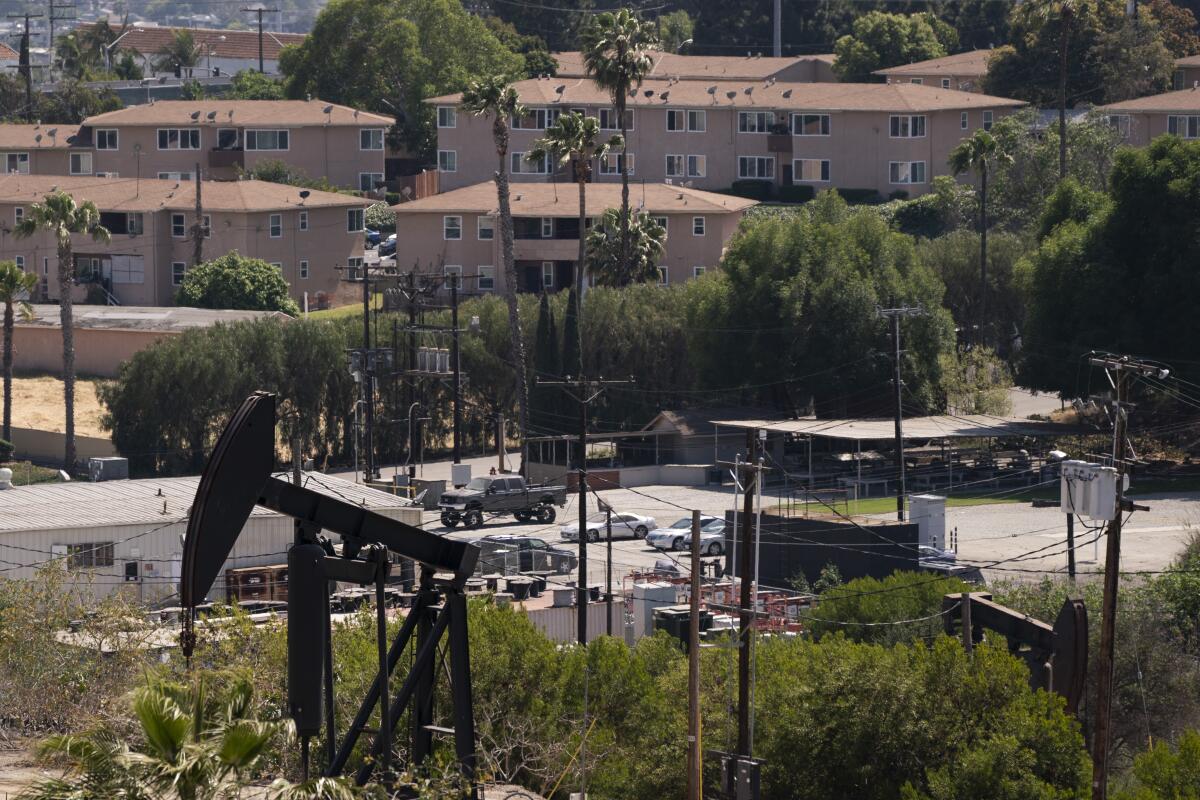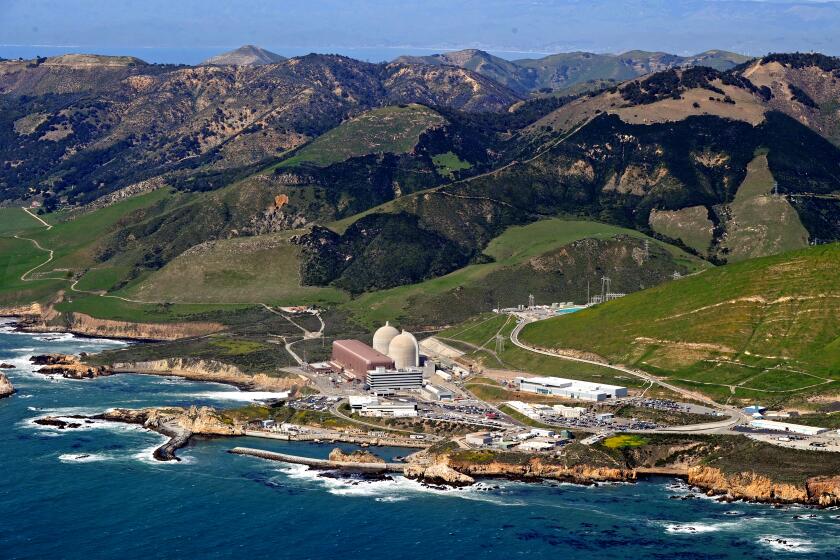U.S. drilling approvals increase despite Biden climate pledge

- Share via
Approvals for companies to drill for oil and gas on U.S. public lands are on pace this year to reach their highest level since George W. Bush was president, underscoring President Biden’s reluctance to more forcefully curb petroleum production in the face of industry and Republican resistance.
The Interior Department approved about 2,500 permits to drill on public and tribal lands in the first six months of the year, according to an Associated Press analysis of government data. That includes more than 2,100 drilling approvals since Biden took office Jan. 20.
Diablo Canyon is the state’s largest clean energy source. Will emissions rise after it closes?
New Mexico and Wyoming had the largest number of approvals. Montana, Colorado and Utah had hundreds each.
Biden campaigned last year on pledges to end new drilling on federal lands to rein in climate-changing emissions. His pick to oversee those lands, Interior Secretary Deb Haaland, adamantly opposed drilling on federal lands while in Congress and co-sponsored the liberal Green New Deal.
But the steps taken by the administration to date on fossil fuels are more modest, including a temporary suspension on new oil and gas leases on federal lands that a judge blocked last month. Other major decisions include blocked petroleum sales in the Arctic National Wildlife Refuge (ANWR) and the cancellation of the Keystone XL oil pipeline from Canada.
Because vast fossil fuel reserves already are under lease, those actions did nothing to slow drilling on public lands and waters that account for about a quarter of U.S. oil production.
Further complicating Biden’s climate agenda is a recent rise in gasoline prices to $3 a gallon or more in many parts of the country. Any attempt to limit petroleum production could push gasoline prices even higher and risk souring economic recovery from the pandemic.
“He’s walking the tightrope,” said energy industry analyst Parker Fawcett with S&P Global Platts, noting that Keystone and ANWR came without huge political costs because they were aimed at future projects.
“Those easy wins don’t necessarily have huge impacts on the market today,” Fawcett said. “He is definitely backing off taking drastic action that would rock the market.... What you’re going to see is U.S. oil production is going to continue to rebound.”
Haaland has sought to tamp down Republican concern over potential constraints on the industry. She said during a House Natural Resources Committee hearing last month that there was no “plan right now for a permanent ban.”
“Gas and oil production will continue well into the future and we believe that is the reality of our economy and the world we’re living in,” Haaland told Colorado Republican Rep. Doug Lamborn.
Interior Department officials declined further comment on permits issued under Biden.
Under former President Trump, a staunch industry supporter, the Interior Department reduced the time it takes to review drilling applications from a year or more in some cases to just a few months.
Companies rushed to lock in drilling rights before the new administration. And in December, Trump’s last full month in office, agency officials approved more than 800 permits — far more than any prior month during his presidency.
The pace dropped when Biden first took office, under a temporary order that elevated permit reviews to senior administration officials. Approvals have since rebounded to a level that exceeds monthly numbers seen through most of Trump’s presidency.
The data obtained by the Associated Press from a government database is subject to change because of delays in transmitting data from Interior field offices to headquarters.
If the recent trends continue, the Interior Department could issue close to 6,000 permits by the end of the year. The last time so many were issued was fiscal 2008, amid an oil boom driven by crude prices that reached an all-time high of $140 a barrel that June.
Decisions on about 4,700 drilling applications remained pending as of June 1, which means approvals are likely to continue at a heavy pace as officials work through a backlog left over from the Trump administration, said Fawcett, the industry analyst.
Environmentalists who share the administration’s climate goals have expressed growing frustration as prospects for a ban on drilling fade. They contend the administration could take executive action that would stop additional permits but has caved to Republican pressure.
“Every indication is they have no plans of actually fulfilling their campaign promise,” said Mitch Jones, policy director for the environmental group Food and Water Watch. “The result of that will be continued and increasing development of fossil fuels on public lands, which means more climate change.”
Economists and other experts have been skeptical about how much impact a permit ban would have. Companies simply could shift onto private and state lands and keep drilling, said University of Chicago deputy Dean Ryan Kellogg.
The administration’s defenders say it’s being pragmatic in the face of a Senate split 50-50 between Democrats and Republicans and questions over whether the government could legally stop drilling on leases already sold to companies.
That has meant forgoing a drilling ban in hopes of getting bipartisan support for a huge infrastructure package that includes clean-energy incentives and other measures to address global warming.
“It’s the long game.... You’ve got to appease some of those oil and gas state senators,” said Jim Lyons, who was deputy assistant Interior secretary under President Obama and is now an environmental consultant. “It means jobs back home for thousands of workers. You can’t just pull the plug overnight.”
More to Read
Inside the business of entertainment
The Wide Shot brings you news, analysis and insights on everything from streaming wars to production — and what it all means for the future.
You may occasionally receive promotional content from the Los Angeles Times.











